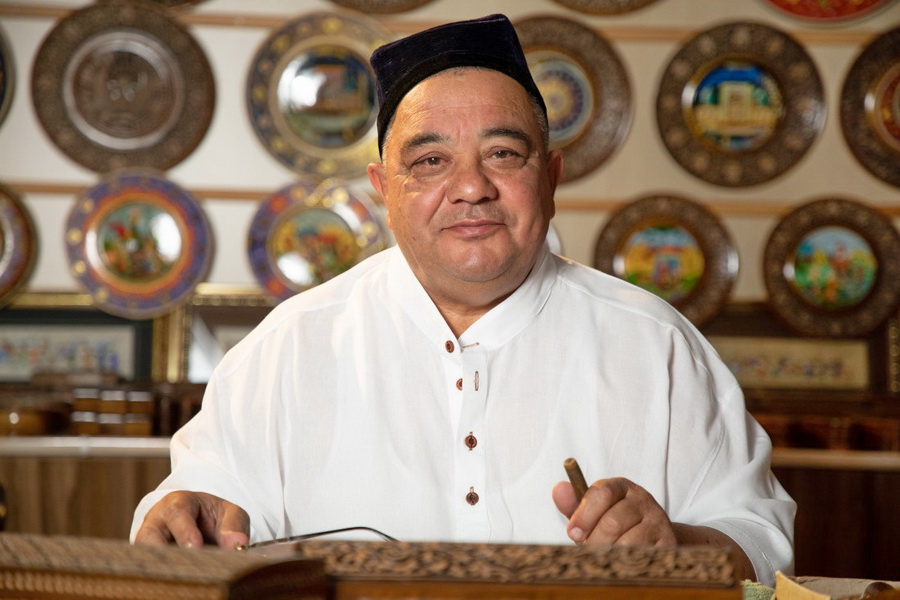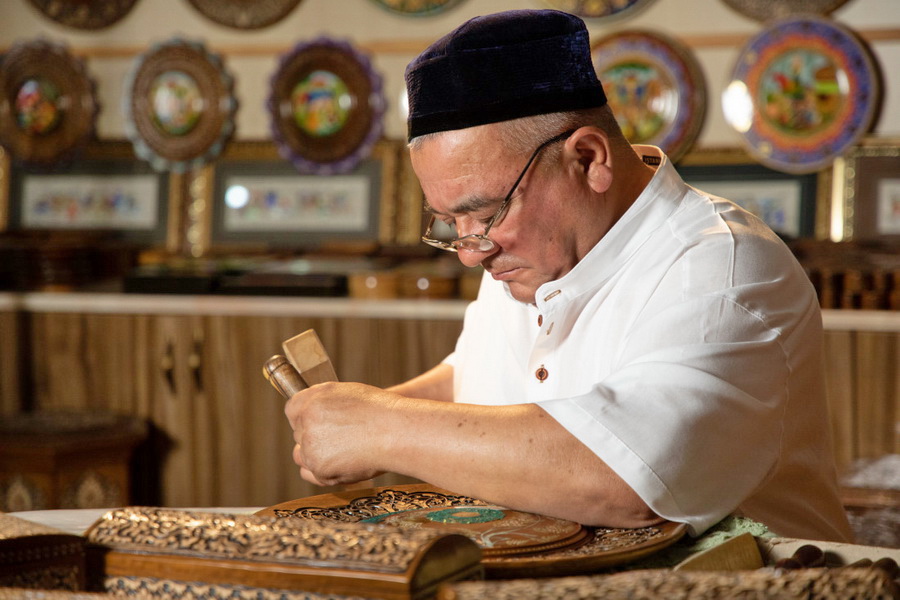
Photo source: www.uzbekistan.travel
Akmal Azlarov (born 1957) is a renowned Uzbek craftsman known for preserving and advancing the Tashkent school of wood carving. A member of the Khunarmand Craftsmen's Association, he has been honored with the Medal of Honor for his contributions to the craft.
The Path of a Master
Azlarov began his professional journey in 1979, qualifying as a technologist-designer in the woodworking and furniture industry. From 1982 to 1986, he continued his studies at the Faculty of Fine Arts and Drawing at the Tashkent Pedagogical Institute (now the Department of Fine Arts at the National Pedagogical University of Uzbekistan). This dual background enabled him to merge technical precision with refined artistic sensibility.
Today, Akmal Azlarov remains deeply involved in creative practice, regularly participating in exhibitions and craft fairs across Uzbekistan and abroad, including in Russia, Kazakhstan, and EU countries.
Teaching is a central part of his mission. By founding his own woodcarving school, he has created a space for passing on the values and techniques of the Tashkent woodcarving tradition. His instruction emphasizes a thoughtful and respectful approach to the material. As he explains:
“When you work with wood, you don't just carve – you talk to it”.
Style

Akmal Azlarov is a leading figure of the Tashkent school of wood carving. The city has long been recognized as one of the principal centers of this Uzbek craft, where woodcarving reached new heights by the late 19th century. It was during this period that the distinct features of the Tashkent style were fully developed.
In interviews, Azlarov notes that unlike the delicate ornamentation of the Fergana school or the geometric patterns typical of Samarkand, the Tashkent style is defined by its restraint and structural clarity. Its patterns are carved to varying depths, creating rich, sculptural reliefs.
Another hallmark of the Tashkent school is its use of lacquering and selective coloring techniques rarely found in other regional traditions. For example, Khiva craftsmen typically do not lacquer their pieces, instead applying a special oil as a finish.
Azlarov creates a wide range of items, from monumental architectural elements in Tashkent landmarks to smaller, finely crafted household objects. In the 1990s and 2000s, he contributed woodwork to the Temurid Museum, the Turkiston Palace, and Mustaqillik Square (Independence Square).
Among his smaller pieces are:
- decorative legans;
- carved boxes and pencil cases;
- chairs and tables;
- wooden lattice panels for interior design.
However, his signature creation is the lavhi – a traditional sliding wooden bookstand. Azlarov’s versions are especially intricate, featuring up to 10–16 adjustable levels that allow for multiple reading angles. He sees them not merely as functional objects, but as expressions of harmony between craftsmanship and intellect. These lavhi, which showcase both precision and creativity, consistently draw attention at exhibitions and fairs dedicated to Uzbek crafts.
Workshop
Akmal Azlarov’s workshop is located in the heart of Tashkent’s historic center, within the renowned Khast-Imam complex. Housed in the small chambers of an old madrasah, the space is shared with other artisans who create a wide array of traditional Uzbek arts and crafts.
Visitors to Azlarov’s workshop can view some of his most distinctive pieces and join guided tours or hands-on master classes, gaining insight into the techniques and traditions of this exceptional craft.
Visitor Information
- Address: Khast-Imam Ensemble, Zaykarnar Street (Karasaray Street), Old City, Tashkent, Uzbekistan.
- Phone: +99890 3187232
- Opening hours: everyday, 09:00 am – 09:00 pm (in alignment with the complex's general schedule)

